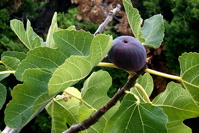Pre-Spring Cleaning
Today I brought in some veggies, and threw out some dreams. But it had to be done.
Let me explain.
I have maintained an extensive seed collection for many years-- many more years than some seeds stay viable for. Today I sat down and went through the whole collection, and tossed out (almost) everything older than 2013. The discards filled a full-size paper grocery bag. I am ashamed at the waste.
I've shared seed and gone to seed swaps and done my part to help bring the joy of organic, open-pollinated seeds to friends and neighbors and garden club members. But I bought more seeds than I had room to plant, and hung onto them. I thought "I could plant this next year!" but I ended up planting something else. Or I planted it, and enjoyed it, but because I have a small garden there was half a packet left, even if I planted it two years in a row. And because I like to try new things, it's unusual for me to plant the same variety more than two years in a row. This went on for many years.
I had seeds that were packed for 2003 in my collection. I had winter cover crop mixes that I put together in 2009 and 2011. I had half and third and quarter packets of this and that from 2005, 2006, 2007, 2009, etc.
I've learned the hard way that while older seeds often germinate, the plants can be less vigorous and the yields poorer than expected. In addition, they can germinate sparsely, leaving holes that need to be filled in with replanting. If I'm going to all the trouble to try to have fabulous organic garden soil and spending precious water on the plants, why would I want second-best?
The seeds I discarded also told a story of my maturation as a gardener-- the varieties were more practical and the packets more used up as the dates got newer. Many of the 2011 & 2012 discards were 3 - 5 seeds in a clear ziploc bag that I had gotten at a seed exchange. Not all were practical-- how would my 2-person household use a 12 - 15 pound Queensland Blue Hubbard squash, and what percent of my garden would the vines take up? I don't have a mill that will crack corn, so why did I collect Native American flour corn varieties, and in quantities too small to plant out for pollination? And so on.
Taking a year or two off from gardening due to the drought has been a good thing for me. It's renewed my interest in my garden, and refocused my intentions on what's practical. The squashes I've selected for my 2017 garden are 1 - 2 person portion sized, for instance. But I'm growing a 3 sisters garden with dry shelling beans on my cornstalks, despite the fact that I'll get maybe a pint of each kind of bean. It's still fun to grow beans that you can't buy, or can rarely buy affordably. The beans' primary job is to fix nitrogen for the corn, getting dry beans to eat is a bonus.
I've organized this year's seeds into a single bin, and sorted them by what time of year I'll plant them. A bunch of seeds are still incoming, orders from Kitazawa, Baker Creek, and Kitchen Garden seeds. They'll have a place to go where I can find them without rummaging through the bins.
More seeds? Yes, but. They're things I'll want to grow for a couple of years-- and I'll do more outreach to my local community garden to share them out before they get too old. No more seed hoarding. Now if I can just do the same for my fabric collection....














